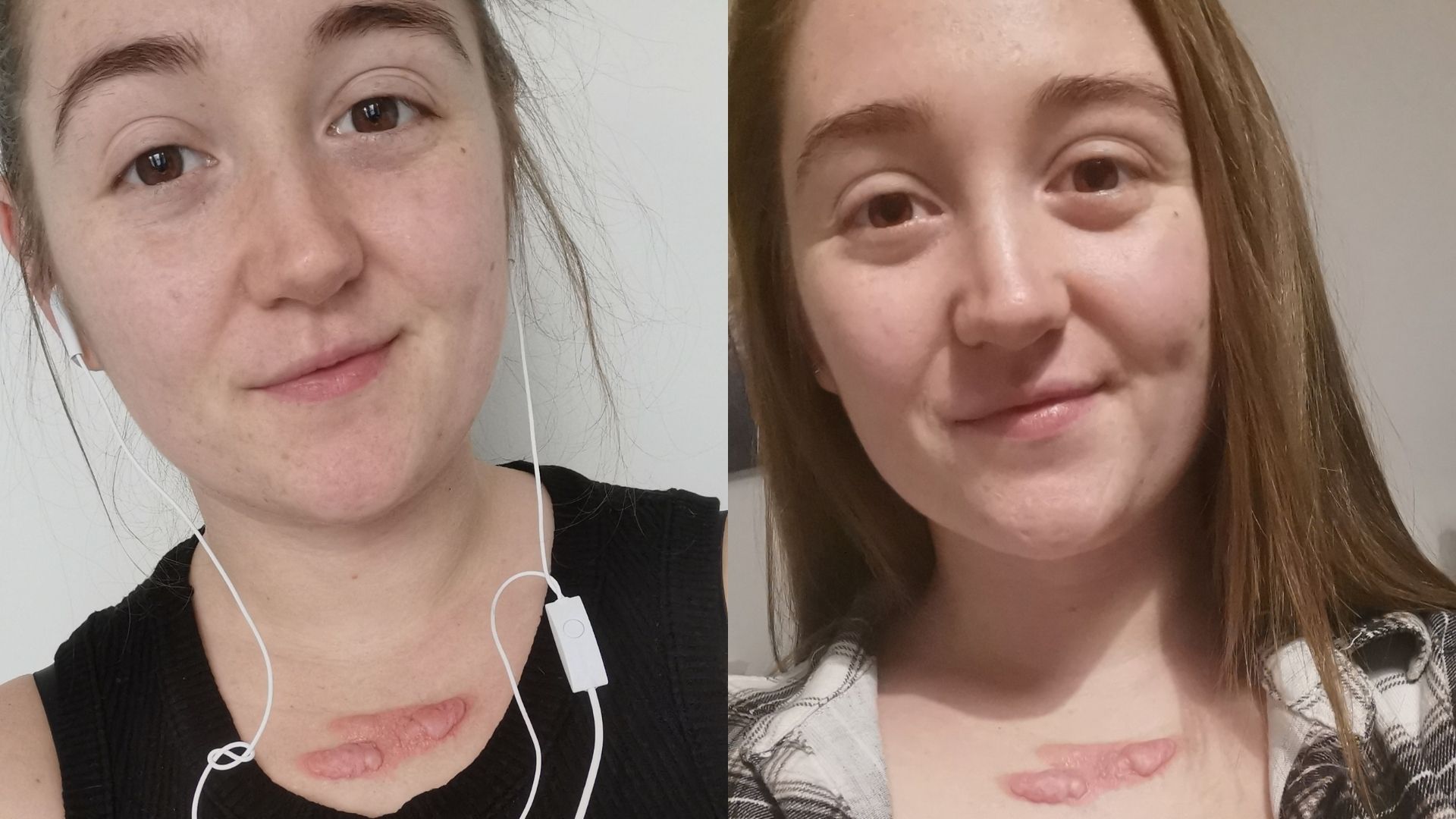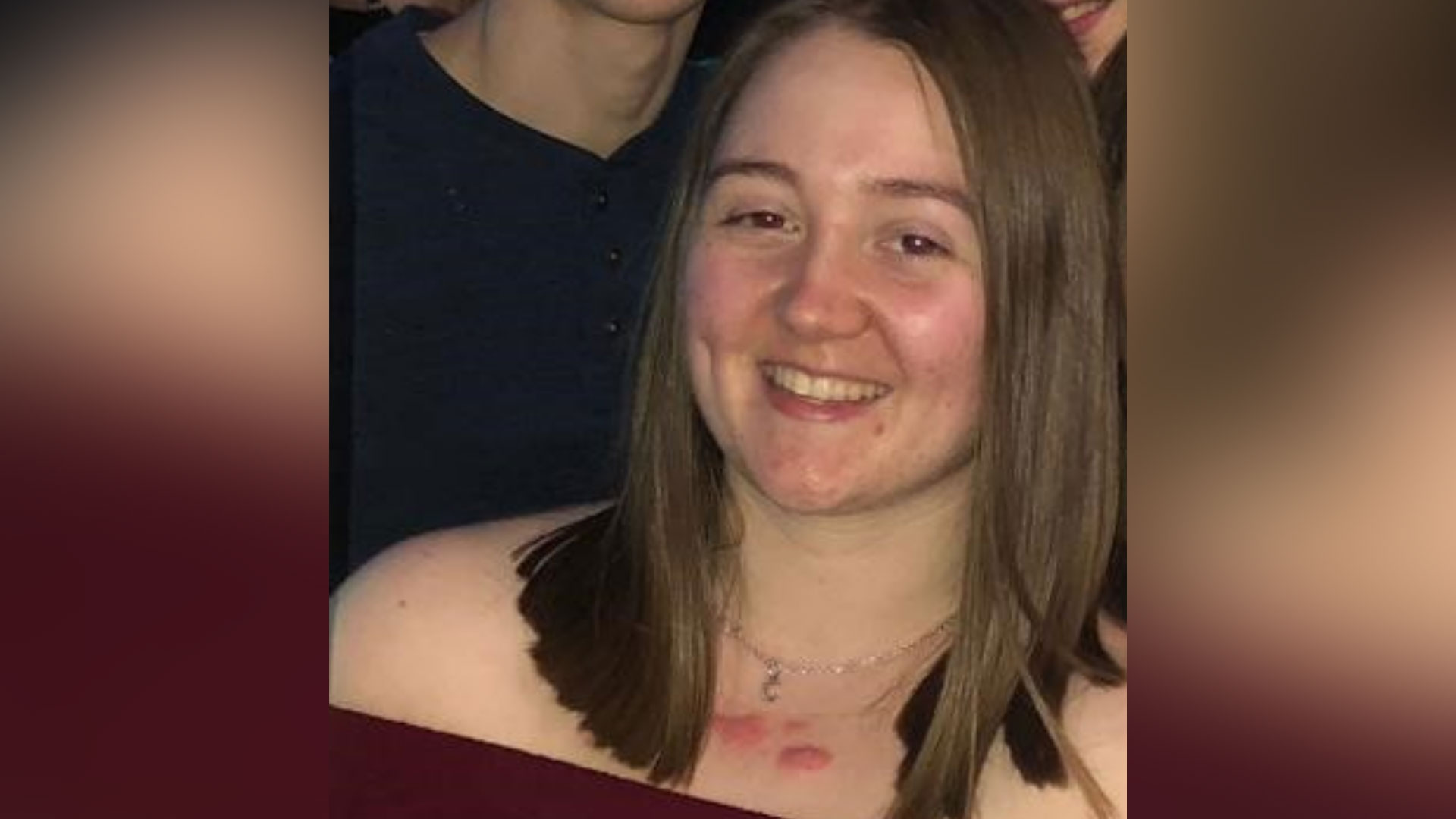I have a number of keloid scars, which are enlarged, raised scars that can be pink, red, skin-coloured or darker than the surrounding skin. I had one small one in the middle of chest at the age of 16, which didn’t really bother me as it wasn’t very noticeable.
However, during my time at university, they multiplied and grew rapidly. I now have three large keloids in the middle of my chest, which are highly noticeable as many tops don’t cover them. I also have ten or more lower down on my chest and roughly another ten on my back and shoulders.
They can sometimes itch and cause a stabbing pain, just to remind me that they’re still there.
When the keloid scars first appeared, it affected me a lot. I didn’t feel comfortable going out and enjoying myself because I felt like everybody was staring at me.
People always felt the need to point them out and say things like, “Oh, that looks bad,” or “Ouch, that looks painful. What did you do there?”. It’s a weird feeling because people are nosey and you kind of expect questions, but it makes you question how people see you and what they’re thinking.
One time at work I was even asked if I was contagious. I found this incident quite difficult as I was working as a waitress at the time, and I was very aware that the way I wanted to react to this absurd comment – which was to scoff and walk away – was not possible.
Remaining positive is hard. I needed to let the anger and sadness sink in and have my moment of going through these feelings. Pretending I didn’t feel this way would have only made it worse. So allow yourself some time to process your feelings.
My physical reaction must have shown that I was quite shocked as I remained silent for a couple of moments before awkwardly laughing it off. After this I had to take a few minutes to myself and, admittedly, I cried a little as I was completely unprepared for a comment like that.
I think my volunteer work with children has helped me to handle these situations better over time. They are always curious, but their questions are much kinder than the ones I hear from adults. They’re just interested to ask what they are. This has helped me become more confident when explaining my visible difference or handling people’s comments.
It’s not possible to completely remove keloid scars, but there are methods out there to reduce their size. Unfortunately, these methods have not worked for me. The dermatology unit have been very helpful, but they lack empathy. The staff just look at my scars and make generic comments: “That looks painful.”
I understand that healthcare professionals have to remain professional, but I think they could be more understanding of the emotional and psychological impact of visible differences as well as more mindful of how they discuss them.
For instance, I once became quite upset during an appointment as my treatment plan at the time wasn’t working. The dermatologist said “We don’t have a magic wand to fix this” in quite a degrading way as if I was getting upset over something unimportant.

Chloe would like to see a greater focus on the psychological impact of living with a visible difference.
These experiences have affected my self-esteem massively over the past years, but I’m glad that I’ve now reached a point where I feel more comfortable about not covering up my scars.
I’ve been able to accept that my scars aren’t going anywhere and, yes, I could potentially get more, but I might as well own them! I would love to say there was a massive turning point which allowed me to feel this way, but it was more down to being fed up that I was constantly worrying about it.
I recently had a Skin Camouflage appointment with a Changing Faces practitioner. My graduation is coming up and I want a photo where people see me and my achievement of graduating without being drawn immediately to my scars.
To have the choice to cover up my scars is amazing as I feel more in control of how I appear to other people. It has even made me feel more comfortable when I’m not covering my scars. I get to decide if I want to have them on show or to cover them up.
The practitioner at my appointment said: “These camouflage products provide you with a choice over your appearance and put you back in control. But never just use a small mirror when you’re going to apply the make-up products, use a full-length mirror and look at yourself as a whole person – not just that one area where your scars are.”
This made me realise that when I look in the mirror, I often only see how noticeable my scars are. I place all my attention on them and, in doing so, I don’t see all of me. Just knowing that there is much more to me than my scars has made me feel more confident in myself.
I’ve been able to accept that my scars aren’t going anywhere and, yes, I could potentially get more, but I might as well own them!
My advice to anyone with a visible difference who is struggling would be to focus on what you do like about yourself. I’d also say that if you are undergoing treatment, do not feel discouraged if it isn’t going the way you’d like.
Remaining positive is hard. I needed to let the anger and sadness sink in and have my moment of going through these feelings. Pretending I didn’t feel this way would have only made it worse. So allow yourself some time to process your feelings. It will then be easier hopefully to move forward and feel more positive about your visible difference.
